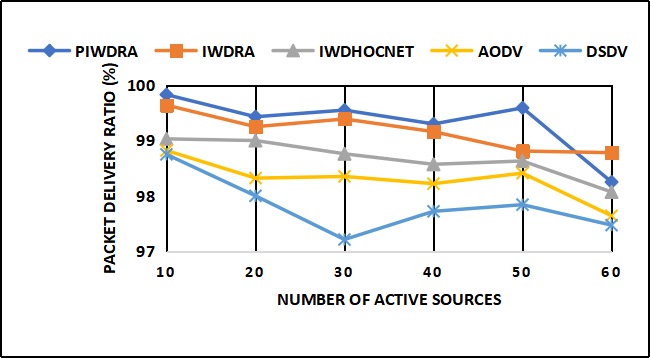Power-Aware Intelligent Water Drops Routing Algorithm for Best Path Selection in MANETs
DOI:
https://doi.org/10.17762/ijcnis.v17i2.6565Keywords:
Intelligent Water Drops, Metaheuristics, Optimization, MANETs, Energy, RoutingAbstract
The absence of a central framework, the constantly fluctuating layout, the restricted resources, and the dispersed structure of Mobile Ad hoc Networks (MANETs), among other characteristics, make routing a critical problem. A proficient, energy-aware routing path selection algorithm can improve network performance. In this paper, a routing mechanism for path selection called the Power-aware Intelligent Water Drops Routing Algorithm (PIWDRA) is proposed, which is based on a physics-water metaheuristic called Intelligent Water Drops (IWD). In the algorithm, the global best path is selected based on a cost function that takes into consideration minimum energy, hop count, and time delay. Minimum energy has the highest weight factor. The link cost, Heuristic Undesirability (HUD), local update of the soil of a link and the soil of a drop, as well as the update of the soil of the paths that generated the local best path, incorporate one or more factors, which include time delay, energy, and the number of hops. Results obtained after simulating in Network Simulator 3 (NS-3) under variations in pause times and number of active sources show that the PIWDRA outperforms the Intelligent Water Drops Routing Algorithm (IWDRA), the Intelligent Water Drops-Based Optimization Algorithm for Mobile Ad-hoc Networks (IWDHocNet), the Ad-hoc On-Demand Distance Vector (AODV) routing protocol, and the Destination Sequence Distance Vector (DSDV) routing protocol. The performance metrics involved packet delivery ratio, average end-to-end delay, energy consumption, and network lifetime. In future work, the algorithm can be enhanced with congestion techniques such as cross-layer design, queue management, and rate control. Also, a hybrid metaheuristic routing algorithm can be the focus of future work.
Downloads
Published
How to Cite
Issue
Section
License
Copyright (c) 2024 International Journal of Communication Networks and Information Security (IJCNIS)

This work is licensed under a Creative Commons Attribution-NonCommercial-ShareAlike 4.0 International License.




